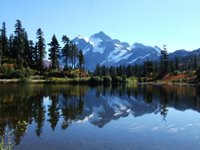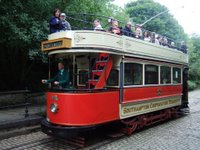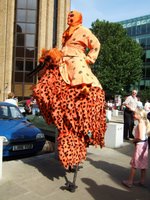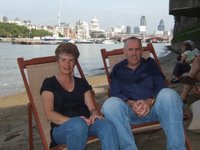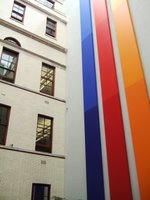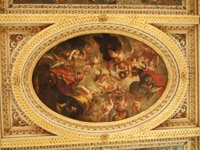 The weekend was spent in and around Birmingham, starting on Saturday with the Tolkien Trail. The first house his family lived in after returning from South Africa is still in an area of Birmingham, which used to be the village of Sarehole.
The weekend was spent in and around Birmingham, starting on Saturday with the Tolkien Trail. The first house his family lived in after returning from South Africa is still in an area of Birmingham, which used to be the village of Sarehole. The Sarehole Mill is open and must look just as it did to Tolkein. Nearby is Moseley Bog, the inspiration for the ‘Old Forest’ where Tom Bombadil lived. We then drove a few miles west to see the “Two Towers” (one a folly and one part of the Waterworks): inspiration for the second book in the Lord of the Rings trilogy.
The Sarehole Mill is open and must look just as it did to Tolkein. Nearby is Moseley Bog, the inspiration for the ‘Old Forest’ where Tom Bombadil lived. We then drove a few miles west to see the “Two Towers” (one a folly and one part of the Waterworks): inspiration for the second book in the Lord of the Rings trilogy.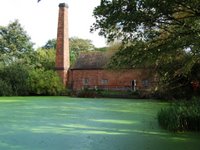
From there drove further west to Wightwick Manor. This house was built in 1887 and extended in 1893. The intention was to build a house which looked as if it had always been there, but to include all mod-cons of the time.

 One of the first six homes in England to have electricity, it also had central heating and would have been extremely comfortable. We loved it, and, from the external appearance, were certainly fooled into thinking it was a Tudor house that had been lived in for generations. Sadly, it was actually only lived in for 50 years.
One of the first six homes in England to have electricity, it also had central heating and would have been extremely comfortable. We loved it, and, from the external appearance, were certainly fooled into thinking it was a Tudor house that had been lived in for generations. Sadly, it was actually only lived in for 50 years. On Sunday we took a very different tour through a series of homes, also operated by the National Trust. They have opened up the last remaining example of the 43,000 “Courts”, Back-to-back housing complexes, which were the standard form of working class accommodation in Birmingham from the early 1800s to the 1960s.
On Sunday we took a very different tour through a series of homes, also operated by the National Trust. They have opened up the last remaining example of the 43,000 “Courts”, Back-to-back housing complexes, which were the standard form of working class accommodation in Birmingham from the early 1800s to the 1960s. 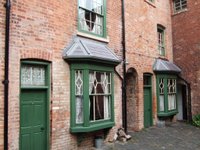
The tour started in a house as it was in 1840, no lighting or plumbing, and we learnt the history of the actual occupants. As we moved through the five different dwellings we moved forward in time, until we heard about the final tenant, a tailor’s workroom and shop, only vacated in 2002 when the Trust took over.
This tour was excellent, and, as with all National Trust tours gave a glimpse of a life style we can only imagine.
 Usually this is because the lifestyle in the “big house” was several orders of magnitude away from what we could ever hope to experience. In this instance it is our fairly normal lives that would beyond the imaginings of the inhabitants of “Court 15”. This was one of the smaller Courts so there would only be some 60 people sharing the same three outdoor, non-flush, toilets and two laundries; putting their tallow candles in tin boxes to stop the rats eating them; sharing the same tin bath between the 11 families on a daily roster; and living out their lives in a 60 sq m yard.
Usually this is because the lifestyle in the “big house” was several orders of magnitude away from what we could ever hope to experience. In this instance it is our fairly normal lives that would beyond the imaginings of the inhabitants of “Court 15”. This was one of the smaller Courts so there would only be some 60 people sharing the same three outdoor, non-flush, toilets and two laundries; putting their tallow candles in tin boxes to stop the rats eating them; sharing the same tin bath between the 11 families on a daily roster; and living out their lives in a 60 sq m yard.













